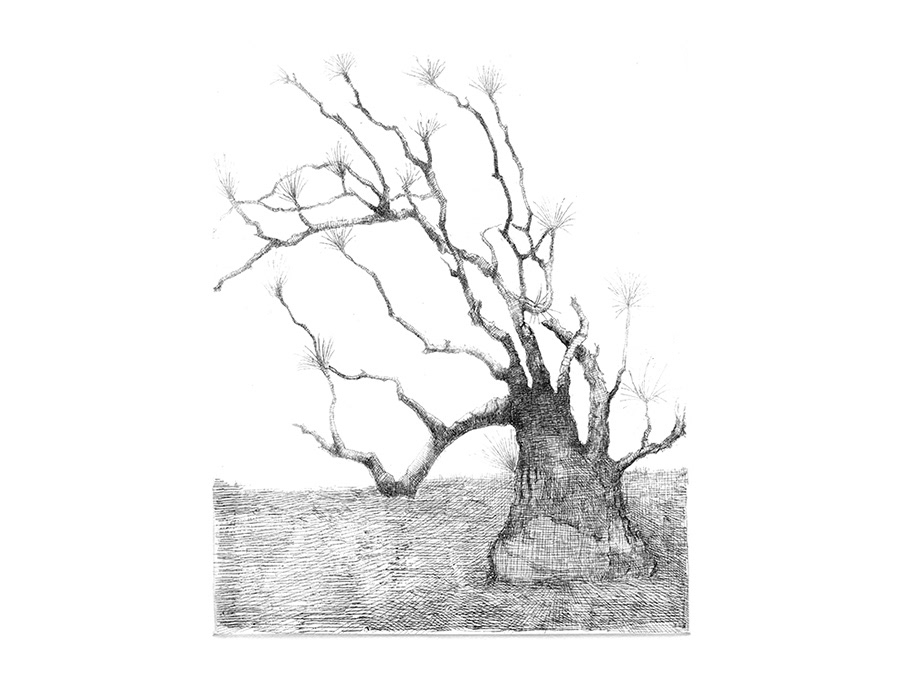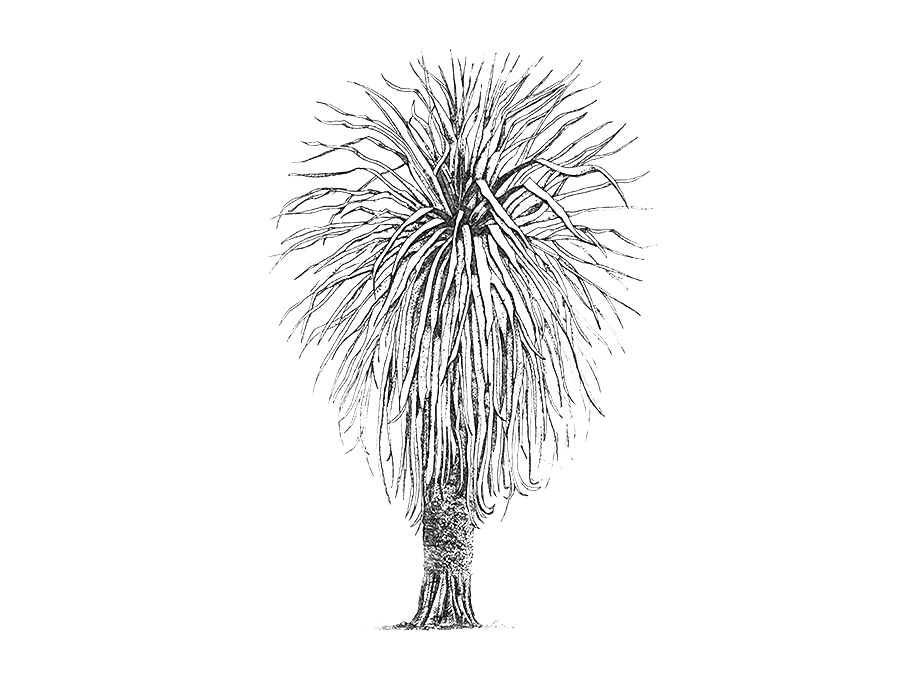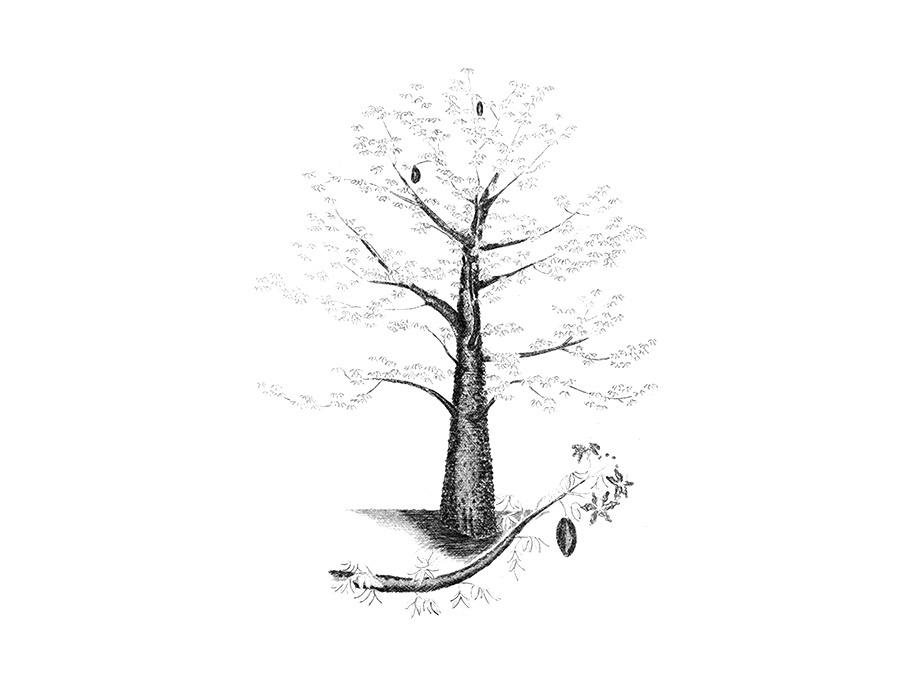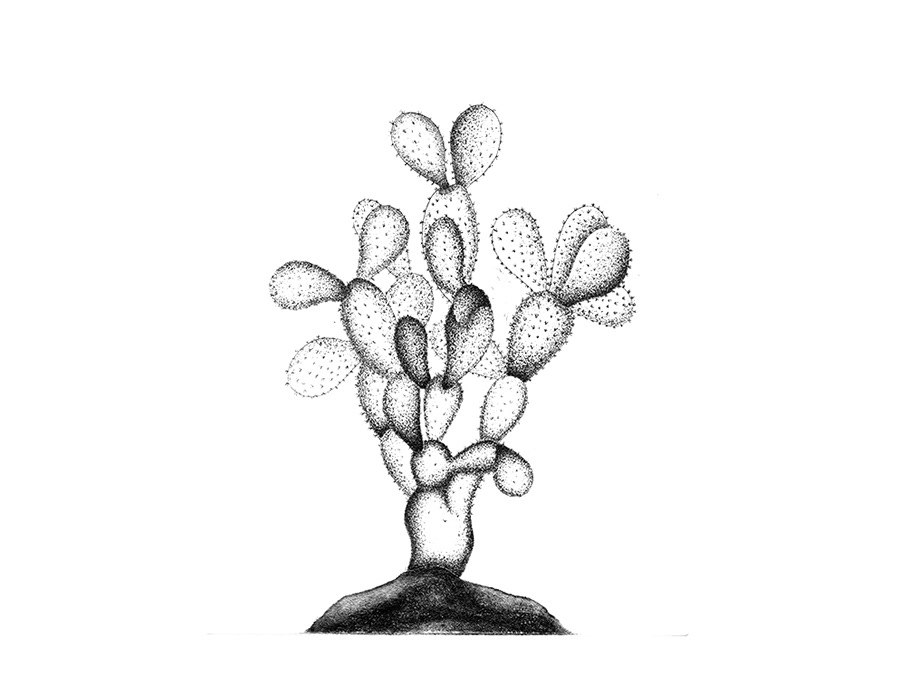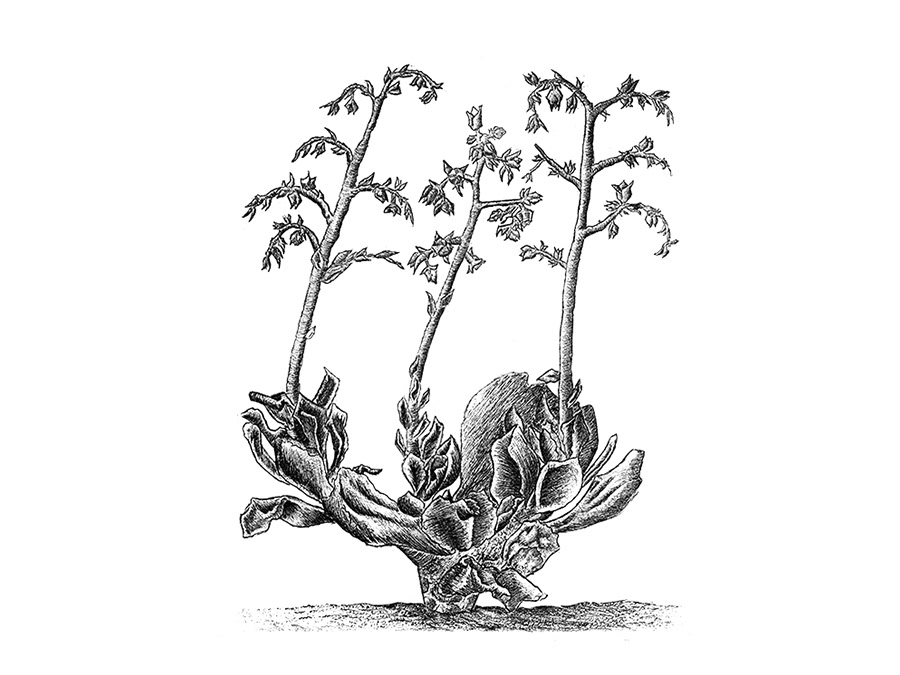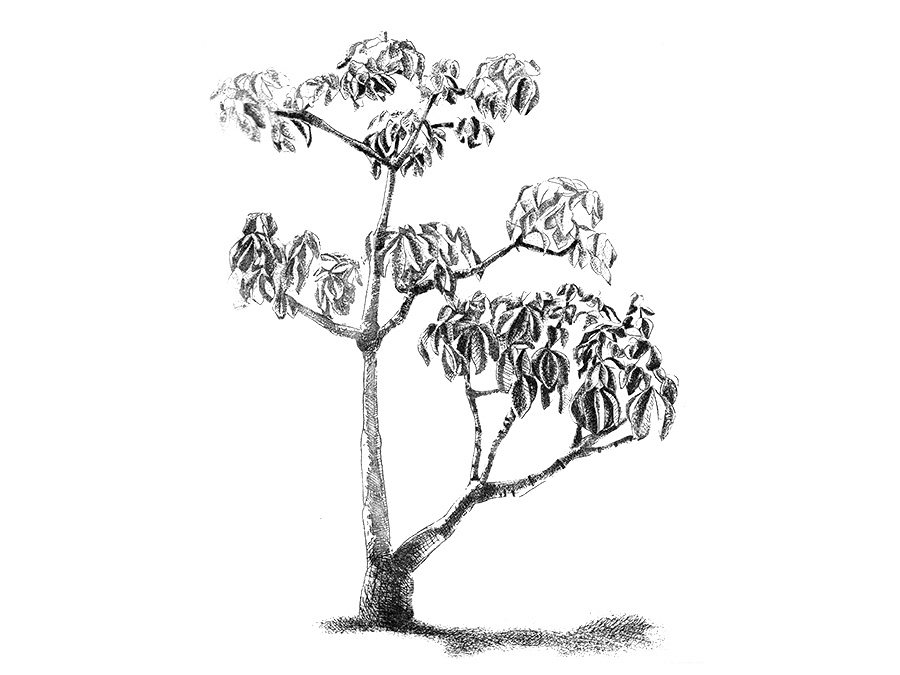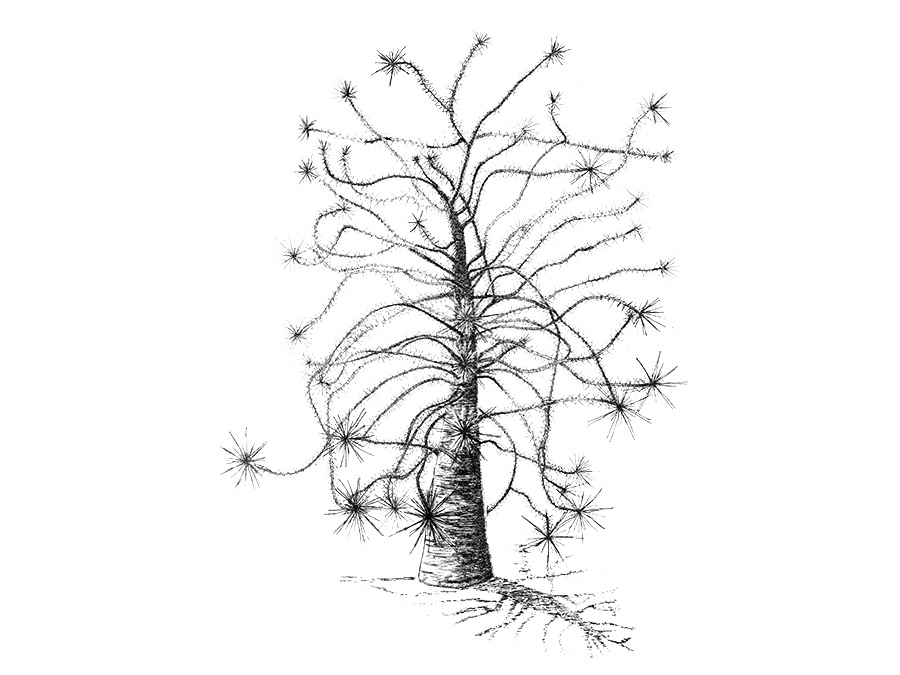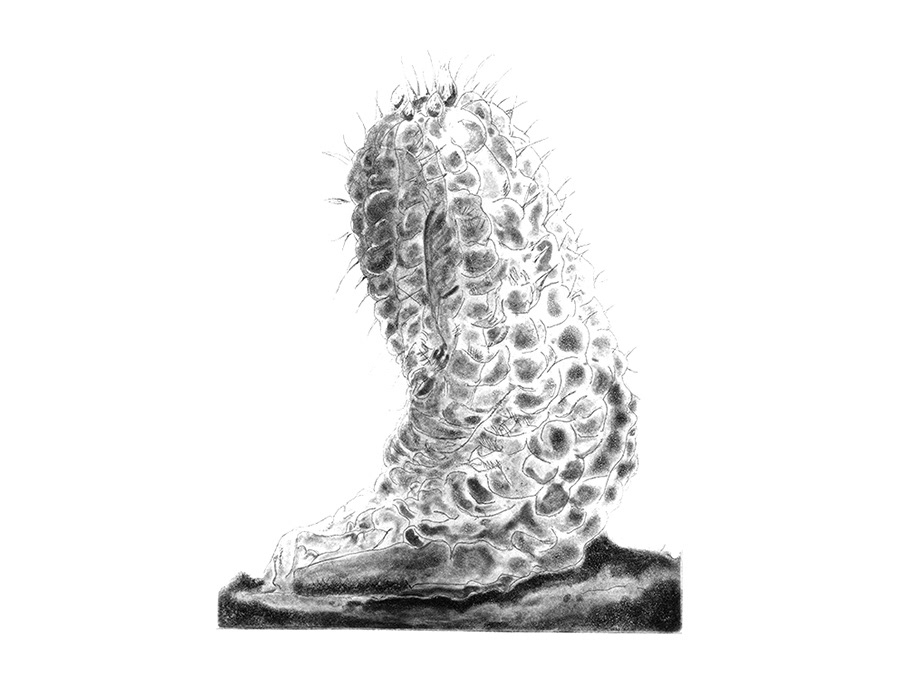Dumortieri • Isolatocereus dumortieriieri
The plant illustrated in this plate comes from Totolapan, in the upper basin of the Tehuantepec River. It is a young specimen that the collectors from the Garden found growing wild on a rocky slope. They were struck by the spiral growth of the tender stems. In the Garden, we also cultivate a mature plant from the Cañada de Cuicatlán. Mature specimens can reach six meters in height, with a well-defined trunk that branches out in a candelabra shape. The fruit is edible; it is sweet and juicy, the size of a small grape, and reddish-orange in color. Outside of Oaxaca, the species grows in Guerrero, Morelos, Michoacán, and the State of Hidalgo. Previously, specialists assigned this plant to the genus Stenocereus, to which pitayas and tunillos belong. In the most recent classifications of cacti, the genus Isolatocereus, as the name indicates, has been isolated from other groups, denoting a separate evolutionary history. The name and separation had already been proposed since the 1940s by a European researcher, whom new studies now support. Taxonomists have made numerous changes in scientific nomenclature as they clarify previously obscure relationships between living beings. Names will continue to change as new tools in molecular biology allow for a better understanding of the genetic history of plants and animals. The recognition of this and other species as new genera accentuates the diversity of Mexican cacti. While the family originated in South America, our country possesses the greatest variety of genera (54) and species (around 850), most of which are endemic, representing over 50% of the global diversity of the family (approximately 97 genera and 1400 species). The diversification of cacti outside of their center of origin reflects the geological, topographic, and ecological complexity of the area they colonized millions of years ago, presenting them with numerous evolutionary opportunities and resulting in a prolific branching of the family. This pattern of local differentiation is repeated time and again in the flora of Mexico, particularly in the southern mountains, and it is one of the themes of the Garden. We thank Biologist Jerónimo Reyes Santiago from the UNAM Botanical Garden for identifying this species. Bibliography: • Bravo Hollis, Helio, and Hernando Sánchez Mejorada 1978 The cacti of Mexico, Vol. 1. UNAM, Mexico City, Mexico. • Arias Montes, Salvador 1997 General distribution. In: Valles Septién, Carmen, et al. Mexican succulents: cacti. Págs. 17-25. CONABIO, SEMARNAP, and UNAM, Mexico City, Mexico.

